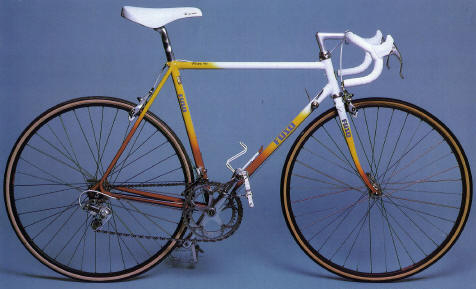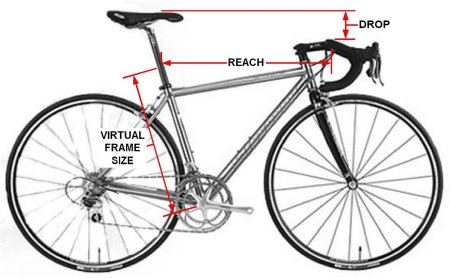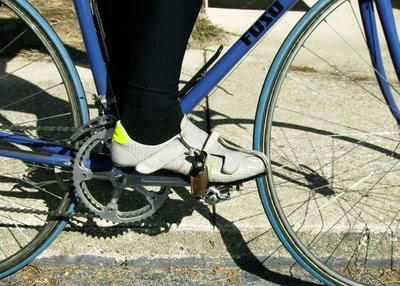Handlebar Drop
 Mon, February 5, 2007
Mon, February 5, 2007 
I have a frame sizing chart on my website; it was formulated about 30 years ago from actual customer measurements and the frames that I built for them. Apart from a few minor updates, it has remained basically the same.
I am of the opinion that while bicycle frame design has changed, and to some degree riding styles change; human bodies remain the same. Therefore, the basic frame fit issues are the same as they have always been.
One question I find people are asking more and more is “How much handlebar drop should I have?” In other words the difference in height between the saddle and the top of the handlebars.
When I retired from framebuilding in 1993 handlebar drop was not even in the equation. The reason being that top tubes were level and the quill stem was placed at a height where the top of the handlebars were about 7cm. above the head bearing. (See picture above.)
The stem could easily be adjusted up or down a centimeter or so either way, and assuming the rider was on the correct size frame the difference between the seat and handlebar height was automatic. Head tube length had absolutely no bearing on anything.
It didn’t matter who built the frame or how the frame angles differed there was always the constant of the level top tube. If a rider switched from one 56-centimeter frame to another 56 from a different manufacturer, the handlebar drop remained the same. In fact the term handlebar drop was not even used.
All this has changed now with compact frames with sloping top tubes; the manufacturer can make the head tube as long or as short as they wish, thus effecting the saddle/ handlebar height difference. Adding to the problem, the new threadless steerers and stems are not as easily adjusted for height as the old quill stems.
Manufacturers are already listing their frames by virtual sizes rather than the actual seat tube length. I think they should also give the virtual top head bearing height. In other words, how much higher or lower is the head bearing compared to a level top tube frame?
Below is a preliminary handlebar drop column added to my frame size chart. I no longer have the luxury of actual customer measurements in front of me. I had to rely on memory and my gut feeling to come up with these numbers. 
 You will not find compact frames in all these sizes, but if for example, your size is a 57cm. but you can only find a 56 or a 58, set the reach and drop as you would for a 57.
You will not find compact frames in all these sizes, but if for example, your size is a 57cm. but you can only find a 56 or a 58, set the reach and drop as you would for a 57.
Your input is appreciated, how does this compare with what you are riding? Bear in mind this is for a racing position; adjust accordingly if you want something for a more leisurely style of riding. Please post a comment
 Dave Moulton | Comments Off |
Dave Moulton | Comments Off | 



















